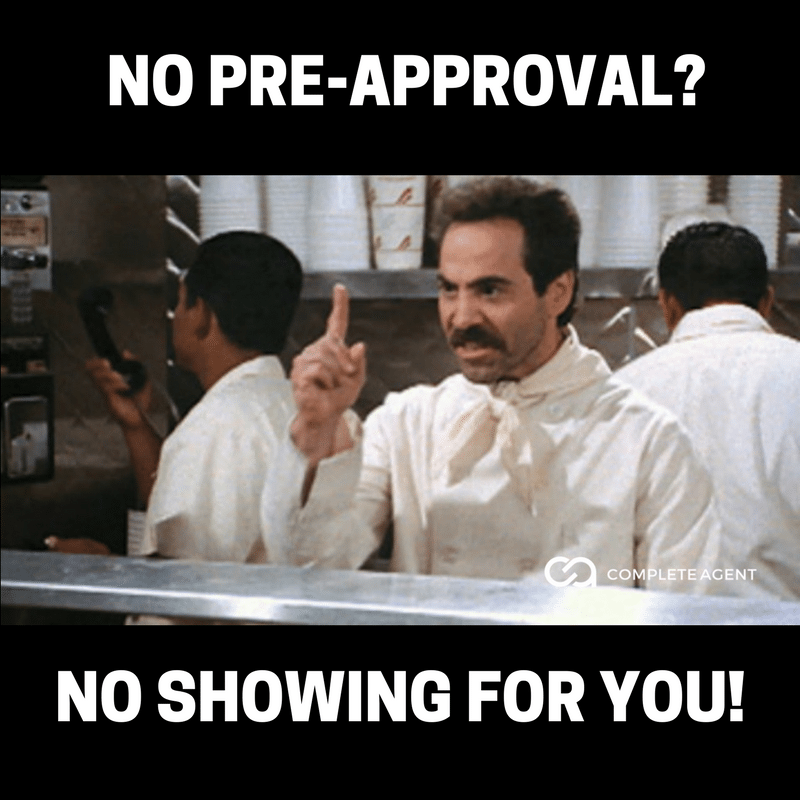2280 Tequesta Ln $1,575,000 Coconut Grove

3 Beds, 4 Baths, Single Family Residence, 3,080 Sq.Ft.
Form follows function in this striking Bauhaus inspired modern home. Creative use of space and angles set this home apart from the rest. Oversized entertaining areas, an incredible abundance of natural light, high ceilings and a simply stunning pool and greenspace complete with outdoor shower. Master suite has a wrap around private terrace with tree-top views. Fenced all around and enclosed with an automatic gated entry leading to the 2 car garage. Very tranquil one way street with friendly neighbors. Walk or ride your bike to the Bay, Fresh Market, marinas and Village Center. Minutes to Brickell, Key Biscayne, 7 miles to MIA, two miles to I95. You will love this peaceful, unique sanctuary in highly sought after North Grove!
Listing Summary
- City:Coconut Grove
- Zip:33133
- Price:$1,575,000
- County:Miami-Dade County
- Subdivision:SILVER BLUFF EST SEC C
- Complex:SILVER BLUFF EST SEC C
- Development:SILVER BLUFF EST SEC C
- Virtual Tour:View Virtual Tour
A10854120
- Property Type:Single Family Residence
- Status:Active
- Square Feet:3,080
- Year Built:2007
- Taxes:$13,310
- Short Sale:
- MLS® #:
Miami condo sales volume in free fall last week of May
Miami condo sales volume in free fall last week of May
Condos are trading for much lower prices in Miami-Dade County, as weekly sales volume continues to plummet due to the pandemic.
A total of 56 condos sold for $16.6 million last week. That’s compared to 51 units that sold for $18 million the previous week. Condos last week sold for an average price of about $296,000 or $250 per square foot.
The top sale was at Ocean One in Sunny Isles Beach. Unit 2905, a three-bedroom, 2,085-square-foot condo, sold for $1.4 million, or $671 per square foot. Linda Levy represented the buyer and seller. It was listed for 136 days.
The second most expensive sale of the week was on Belle Isle in the Venetian Islands. Nine Island Avenue unit 1507 sold for $1.35 million, or $759 per square foot. It was on the market for 26 days. Frank Cavallino represented the seller, and the buyer’s agent was Rey Figueroa.
Here’s a breakdown of the top 10 sales from May 24 to May 30. Click on the map for more information:
Most expensive
Ocean One Condo #2905 | 136 days on market | $1.4M | $671 psf | Listing agent: Linda Levy | Buyer’s agent: Linda Levy
Ocean One Condo #2905 | 136 days on market | $1.4M | $671 psf | Listing agent: Linda Levy | Buyer’s agent: Linda Levy
Least expensive
Latitude on the River #801 | 235 days on market | $425K | $315 psf | Listing agent: Valka Rodriguez | Buyer’s agent: Valka Rodriguez
Latitude on the River #801 | 235 days on market | $425K | $315 psf | Listing agent: Valka Rodriguez | Buyer’s agent: Valka Rodriguez
Most days on market
The Point #3202 | 408 days on market | $534K | $286 psf | Listing agent: Cristina Giral | Buyer’s agent: Sabina Potack
The Point #3202 | 408 days on market | $534K | $286 psf | Listing agent: Cristina Giral | Buyer’s agent: Sabina Potack
Fewest days on market
Nine Island Avenue #1507 | 26 days on market | $1.35M | $759 psf | Listing agent: Frank Cavallino | Buyer’s agent: Rey Figueroa
Nine Island Avenue #1507 | 26 days on market | $1.35M | $759 psf | Listing agent: Frank Cavallino | Buyer’s agent: Rey Figueroa
Disappearance of the first SARS virus
Disappearance of the first SARS virus: Why do we need a vaccine for COVID-19 but didn't for the other?
The Conversation May 13, 2020 12:24 PM IST
Some people question why the current coronavirus has brought the world to stand
still while a previous deadly coronavirus, SARS, did not. Others have questioned
why a vaccine is so urgently needed now to stop the spread of the current
coronavirus when a vaccine was never developed for SARS.
I study viruses and am so fascinated by the complexity that
I study viruses and am so fascinated by the complexity that
I have written a book about them. The tale of SARS and its new cousin
that causes COVID-19, SARS-CoV-2, shows just how unpredictable
viruses can be, particularly when they jump from animals to humans.
Understanding emerging, infectious diseases needs to be a priority. SARS,
which killed about one in 10 infected people, turned out to be highly lethal
but ultimately, and somewhat mysteriously, disappeared.
A virus takes hold
SARS, or severe acute respiratory syndrome, was first noted in Guangdong province,
A virus takes hold
SARS, or severe acute respiratory syndrome, was first noted in Guangdong province,
China in November of 2002, when doctors there saw unusual pneumonia. But the
disease was not reported to the World Health Organization at that time.
In February of 2003, another outbreak occurred in Hanoi, Vietnam, and a WHO officer,
In February of 2003, another outbreak occurred in Hanoi, Vietnam, and a WHO officer,
who later died, examined a patient there and reported a large outbreak to the WHO
main office on March 10, 2003.
Meanwhile, a doctor from Guangdong province travelled to
Meanwhile, a doctor from Guangdong province travelled to
Hong Kong and stayed at the Metropol Hotel, along with a number
of other international travellers. The doctor was infected with
what we now know as SARS-CoV-1. The virus was transmitted to
at least a dozen other hotel guests. Two returned to Canada and
took the virus there.
One returned to Ireland, one to the United States. Three went to
Singapore, and one to Vietnam. In addition, a few people were
hospitalized in Hong Kong, leading to an
outbreak in the hospital there.
From that point, SARS spread to much of the world, although most cases remained in
From that point, SARS spread to much of the world, although most cases remained in
Asia. The virus was aggressive and lethal. Patients typically showed symptoms within
two to three days. There were few reports of any infections without symptoms, as
there are with COVID-19. The masks came out, temperature scanners were placed in all major public gathering places in China and other parts of Asia, quarantines were implemented, the virus infection peaked in late May of 2003 and then it disappeared.
The strict quarantine measures paid off, and by July 2003, the WHO declared the threat over.
In all, there were just over 8,000 cases of SARS-CoV-1 and about 700 deaths. In the U.S. there were a total of just 29 confirmed cases and no deaths. The Hong Kong economy,
In all, there were just over 8,000 cases of SARS-CoV-1 and about 700 deaths. In the U.S. there were a total of just 29 confirmed cases and no deaths. The Hong Kong economy,
with a large tourism component, was severely impacted by SARS in 2003, much as the
U.S. tourism industry is currently one of the most heavily impacted parts of the economy due to SARS-CoV-2.
SARS-CoV-1 and SARS-CoV-2 are closely related to viruses. Scientists believe that both viruses originated in bats. The RNA genomes of the viruses are about 80 percent
Killing cousins?
SARS-CoV-1 and SARS-CoV-2 are closely related to viruses. Scientists believe that both viruses originated in bats. The RNA genomes of the viruses are about 80 percent
identical. What does that mean?
Our own genomes are over 98 percent identical to those of chimpanzees, so 80 percent seems a lot less similar. For a virus though, especially one with an RNA genome, this is actually very closely related.
That’s because viruses can mutate very rapidly. They make a lot of mistakes when
Our own genomes are over 98 percent identical to those of chimpanzees, so 80 percent seems a lot less similar. For a virus though, especially one with an RNA genome, this is actually very closely related.
That’s because viruses can mutate very rapidly. They make a lot of mistakes when
they copy their genomes, and they make thousands of copies in a few hours.
The two viruses have very similar proteins on their exterior and use the same proteins,
The two viruses have very similar proteins on their exterior and use the same proteins,
or receptors, on our cell surfaces to enter the cell. These receptors are found in a lot
of different cell types.
Most studies of SARS-CoV-1 focused on the lungs because that is where the most severe disease occurred, but both viruses can infect a lot of different organs. We won’t
Most studies of SARS-CoV-1 focused on the lungs because that is where the most severe disease occurred, but both viruses can infect a lot of different organs. We won’t
know how often other organs are infected with SARS-CoV-2 until there is time to do
proper autopsies and fully understand the way the virus causes disease.
How are they different, and how is that impacting the course of the pandemic?
How are they different, and how is that impacting the course of the pandemic?
SARS-CoV-1 was more aggressive and lethal than SARS-CoV-2. However, SARS-CoV-2
spreads faster, sometimes with hidden symptoms, allowing each infected person
to infect several others. The current estimate is about three, but we scientists
won’t know the real number until we can test a lot more people, and can understand
the role of people without symptoms.
The most important difference is that contact tracing – or finding out who was
The most important difference is that contact tracing – or finding out who was
exposed to someone infected with the virus – was relatively easy: Everyone had severe symptoms in two to three days.
With SARS-CoV-2, it takes about two weeks for symptoms to appear, and many
With SARS-CoV-2, it takes about two weeks for symptoms to appear, and many
people don’t have any symptoms at all. Imagine asking someone whom they
had contact with for the last two weeks! You can accurately remember most
people you had contact with for the past two days, but two weeks? This critical tool
for pandemic control is very challenging to implement. This means that the
only safe thing to do is to maintain quarantine of everyone until the pandemic is under control.
What about a SARS vaccine? Vaccine studies for SARS-CoV-1 were started and tested in animal models. An inactivated whole virus was used in ferrets, nonhuman primates and mice. All of the vaccines resulted in protective immunity, but there were
What about a SARS vaccine? Vaccine studies for SARS-CoV-1 were started and tested in animal models. An inactivated whole virus was used in ferrets, nonhuman primates and mice. All of the vaccines resulted in protective immunity, but there were
complications; the vaccines resulted in an immune disease in animals.
No human studies were done, nor were the vaccine studies taken further
because the virus disappeared. Many factors were involved in the end of SARS-CoV-1, perhaps including summer weather and certainly strict quarantine of all those who had contact with infected individuals, but we don’t really know why the epidemic ended.
Viruses are like that, unpredictable!
Many of the vaccines being developed for SARS-CoV-2 are quite different, and many
Many of the vaccines being developed for SARS-CoV-2 are quite different, and many
use only small portions of the virus, or the virus RNA. This may circumvent the problems with SARS-CoV-1 vaccines that used more of the virus. Vaccine development has a large experimental component; we just have to make educated guesses and try
different things and see what works. Hence, many different avenues for vaccines
are being tested by different labs around the world.
Marilyn J. Roossinck, Professor of Plant Pathology and Environmental Microbiology, Pennsylvania State University
This article is republished from The Conversation under a Creative Commons license.
Marilyn J. Roossinck, Professor of Plant Pathology and Environmental Microbiology, Pennsylvania State University
This article is republished from The Conversation under a Creative Commons license.
Read the original article.
Updated Date: May 13, 2020 12:24:12 IST
Updated Date: May 13, 2020 12:24:12 IST
Hotels update in Miami Beach
Dear owners, partners and friends of our Hotel.
As you can imagine, we are very aware of all the news from the City of Miami Beach and the Government of Florida in reference to the reopening of all hotels in this phase of COVID-19, as well as the basic lines to follow regarding the protection and safety of clients and workers.
We are studying in detail all the requirements, at the same time that we follow daily the potential movements of the reserves for the coming months, as well as the official reaction of the governments of Europe and the main countries of South America regarding the future movement of potential tourists outside its borders.
The most important points regarding this could be summarized as:
• Europe will not facilitate the departure of aircrafts until July 1, 2020, offering a maximum occupancy of around 35% of the aircraft's capacity.
• USA will not allow until further notice passengers from Brazil, where the COVID 19 crisis is at its peak.
• Other countries (like Argentina) do not allow flights until September 2020…
• You know very well that for tourists from the USA, summer in Miami Beach is the low season, being precisely in the hands of tourism from Europe and South America.
For all these reasons, it is our intention to closely monitor the fluctuation of reserves and based on this we will make the final decision.
Anyway, I can tell you that it will not open until at least July 1, 2020, although it will probably not be until August 1 when we be ready to reopen.
Regarding the particular use of the rooms by you, only and as long as you as owners (neither family nor friends will be allowed), we will be happy to assist you during the months of June and July 2020, although you must comply with some basic security requirements and schedules of which we will inform promptly.
If you intend to use any of your own rooms, please let me know as far in advance as possible.
As always, any kind of slightest news regarding this topic we will notify you promptly.
Thank you for your safe attention, support and understanding of the measures we are taking on behalf of each and every one of you.
Kind regards and continue keeping safe.
Yours,
General Manager
Subscribe to:
Comments (Atom)




